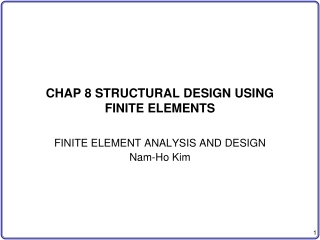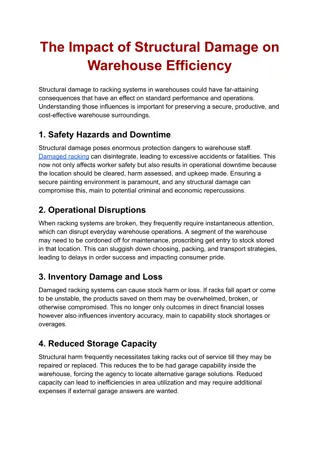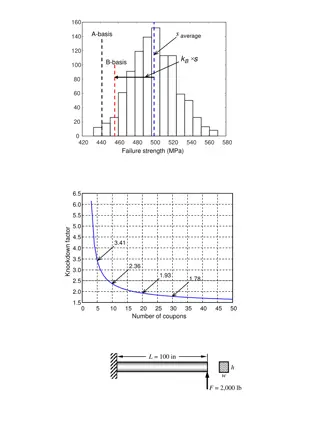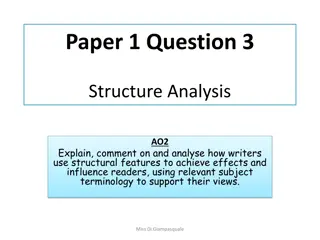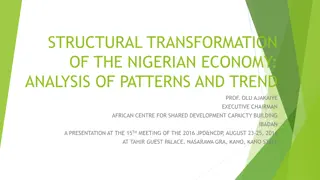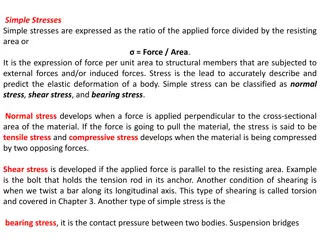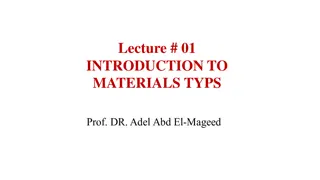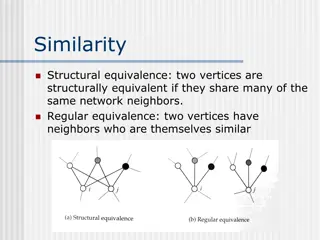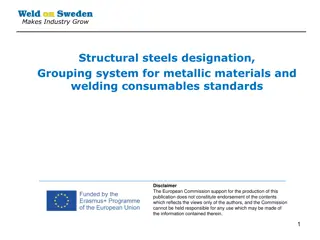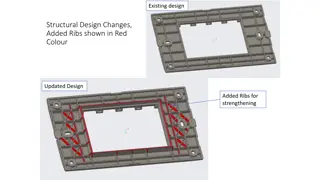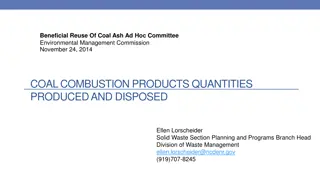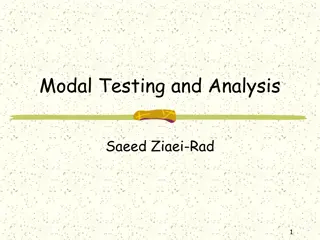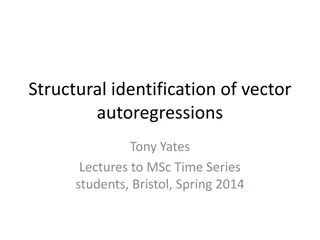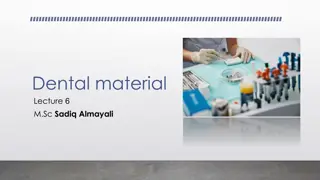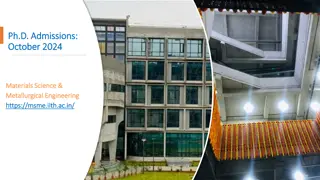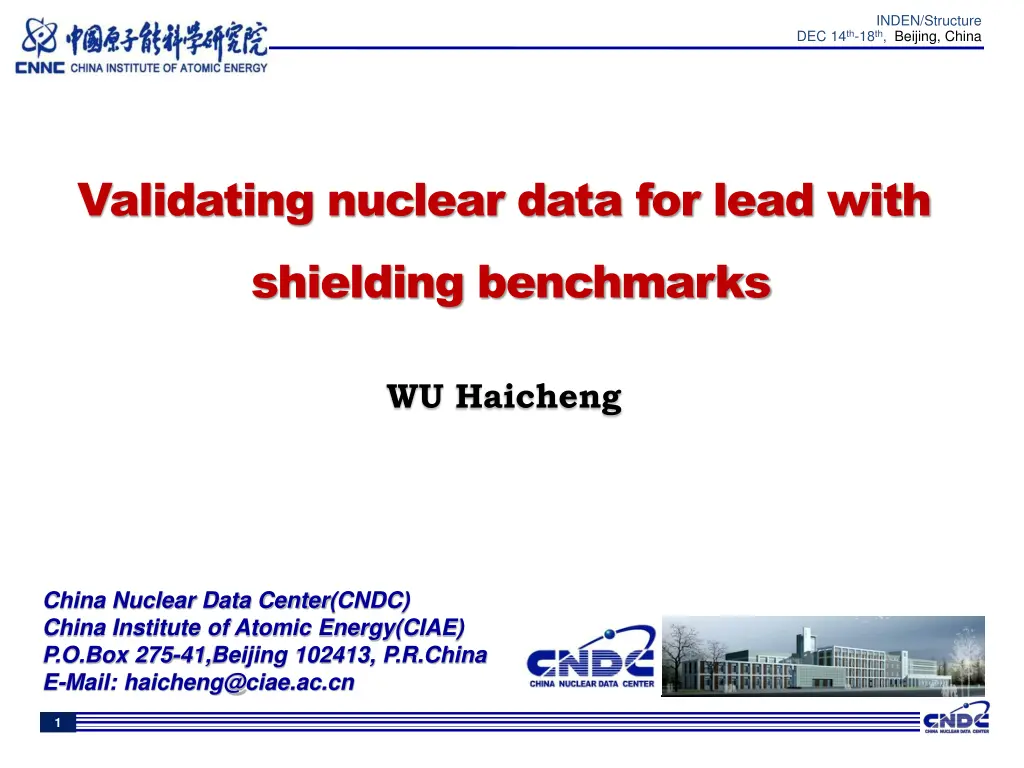
Validating Nuclear Data for Lead with Shielding Benchmarks in Beijing, China
Explore the validation of nuclear data for lead, crucial for criticality and shielding transport calculations, at the INDEN/Structure event in Beijing, China. The study includes benchmark testing, simulation methods, and analysis of results from various experiments and libraries.
Download Presentation

Please find below an Image/Link to download the presentation.
The content on the website is provided AS IS for your information and personal use only. It may not be sold, licensed, or shared on other websites without obtaining consent from the author. If you encounter any issues during the download, it is possible that the publisher has removed the file from their server.
You are allowed to download the files provided on this website for personal or commercial use, subject to the condition that they are used lawfully. All files are the property of their respective owners.
The content on the website is provided AS IS for your information and personal use only. It may not be sold, licensed, or shared on other websites without obtaining consent from the author.
E N D
Presentation Transcript
INDEN/Structure DEC 14th-18th, Beijing, China Validating nuclear data for lead with shielding benchmarks WU Haicheng China Nuclear Data Center(CNDC) China Institute of Atomic Energy(CIAE) P.O.Box 275-41,Beijing 102413, P.R.China E-Mail: haicheng@ciae.ac.cn 1
INDEN/Structure DEC 14th-18th, Beijing, China OUTLINE OUTLINE 1. 1. Background Background 2. 2. Benchmark Benchmark and calculation and calculation 3. 3. Results of the JAERI/FNS slab Results of the JAERI/FNS slab 4. 4. Results of the Results of the IPPE 5. 5. Discussion and Summary Discussion and Summary IPPE Pb Pb sphere sphere 2
INDEN/Structure DEC 14th-18th, Beijing, China 1. 1. Background Background Lead is one kind of coolant material in fast reactor. It also can served as shielding material. The nuclear reaction data for Pb are both important in criticality and shielding transport calculations. Criticality benchmark testing of CENDL-3.2 show both positive and negative keffbias in lead reflected criticality benchmarks HMF057. Pb is one of top 10 materials that contributed to the total criticality k2 most. Shielding benchmark can show and even amplify the defects in nuclear data only related to the sample tested. To validate the reaction data for lead, the evaluated data from major libraries were tested with the JAERI/FNS and ALARM-Cf- Pb experiments. 3
INDEN/Structure DEC 14th-18th, Beijing, China 2. Simulation and analysis method 2. Simulation and analysis method Nuclear data preparation Njoy99.396 + local patch c10. CENDL-3.2, ENDF/B-VIII.0, JEFF-3.3, JENDL-4.0, BROND-3.1. Transport calculation MCNP5 + 107history No variance reduction technology was applied in calculation. Sensitivity of shielding benchmark Decay of the neutron flux in the media follows the law of indices. d x ( ) Neutron flux Sensitivity of neutron flux = = = 0exp x tx t d t t t d d x = When = Constant, x xd , ( ) weak absorb t d t t s 4
INDEN/Structure DEC 14th-18th, Beijing, China 3. 3. Result of Result of the JAERI/FNS slab the JAERI/FNS slab Similar results based on different evaluation library. Under prediction of neutron fluxes were found around 4MeV and from 8-14MeV. Bias below 0.1MeV are ignored in this work. 5cm 20cm 40cm 5
INDEN/Structure DEC 14th-18th, Beijing, China 3. 3. Result of the JAERI/FNS slab Result of the JAERI/FNS slab Bias related to thickness 0.366-0.494MeV and 8.13~14.8MeV are corresponding to (n,el) and (n,inl) reaction separately. CENDL-3.2 6
INDEN/Structure DEC 14th-18th, Beijing, China 4. 4. Result of the Result of the IPPE sphere IPPE sphere ENDF/B-VIII.0 gives the best results. Both under estimation and over estimation were found. <0.05MeV and >2MeV 0.05~0.1MeV and 0.5~1MeV 2mfp 6mfp 4mfp 7
INDEN/Structure DEC 14th-18th, Beijing, China 4. 4. Result of the Result of the IPPE sphere IPPE sphere Bias related to thickness 1.2-8.4MeV, underestimation of neutron flux against thickness increasing were caused by overestimation of (n, inl) scattering. Below 1MeV, overestimation of neutron flux were partially caused by overestimation of (n,inl) cross sections. CENDL-3.2 8
INDEN/Structure DEC 14th-18th, Beijing, China 5. Discussion 5. Discussion and and Summary Summary Pb evaluations from 5 major library were validated with shielding benchmarks, similar performance were shown in comparison. The sensitivity of leakage neutron flux to macroscopic total cross section was deduced, which equals the number of MFP for the sample thickness. Thicker sample, higher sensitivity. When absorb reaction is weak, scattering reaction will play main role. Validation results of FNS and the IPPE sphere show that Above 1.2 MeV, (n,inl) cross sections were overestimated. Around 0.366-0.494MeV, (n,el) cross sections were overestimated. Resonance parameters for lead need to be improved. 9
INDEN/Structure DEC 14th-18th, Beijing, China Thank you for your attention Thank you for your attention ! ! Questions? Questions? 10

